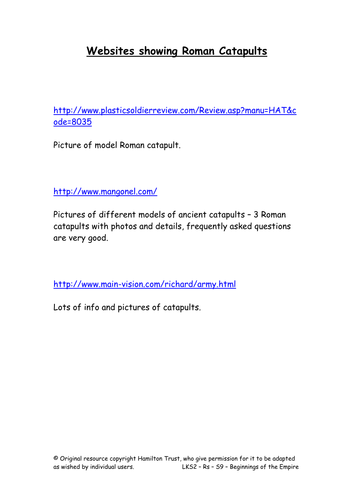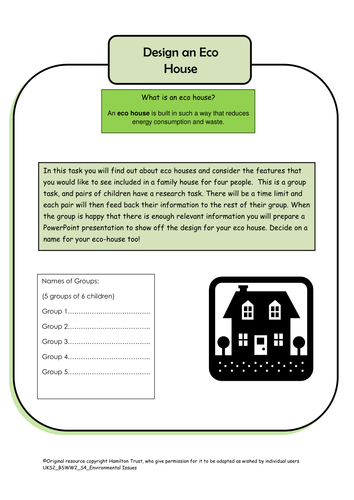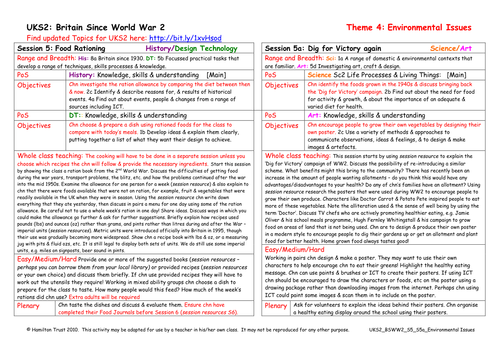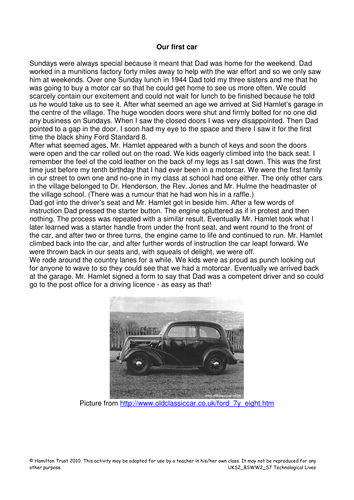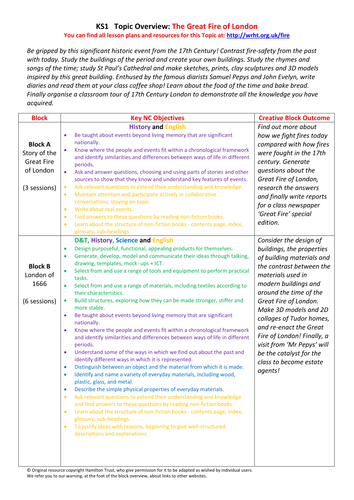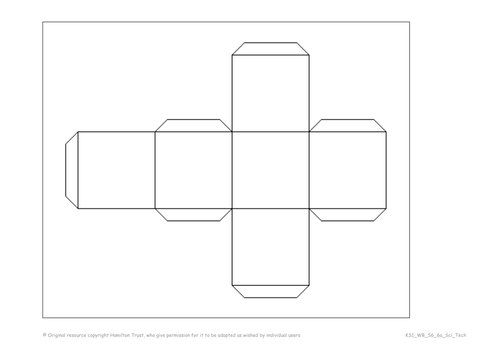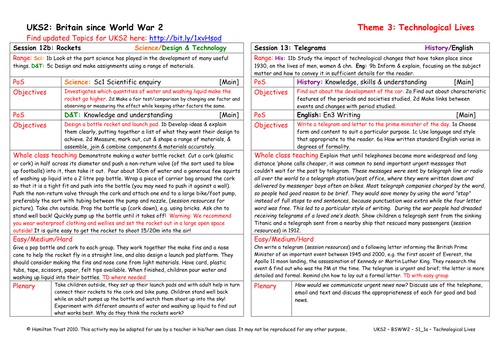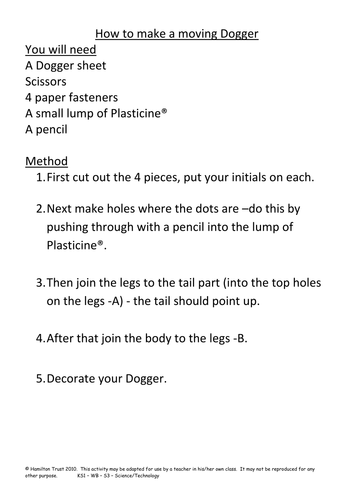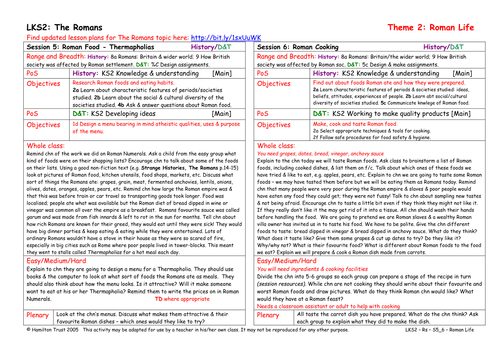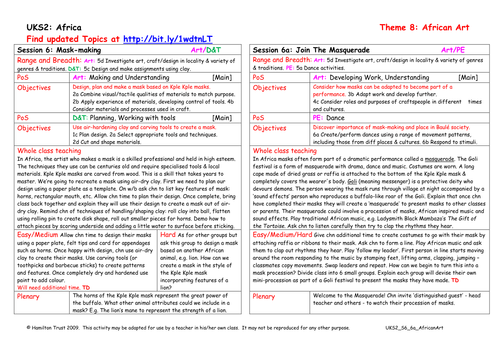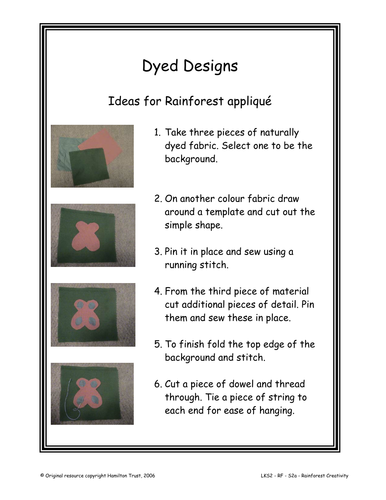
3k+Uploads
10009k+Views
11617k+Downloads
Design, engineering and technology

Everyday Materials - Materials Matter - Year 2
Explore the useful properties of materials with a range of investigations involving absorbency and flexibility. Discover which type of kitchen towel or cloth is most effective at mopping up spills; consider why building materials must be absorbent and which ones fit the bill; create artwork by exploring the textures of materials and learn all about wax and how to re-mould it.
Includes 6 session plans & resources:
01 - Mopping up
02 - Are bricks absorbant?
03- Waterproofing materials
04 - Printing
05 - Resist the wax!
06 - Melting and moulding
Hamilton’s science scheme uses hands-on investigative science activities to promote a deep understanding of scientific concepts and help children develop effective methods of scientific enquiry. Our scheme is fresh, original and free!

Design & Make Catapults
Children look again at Roman catapults. Using a wide variety of materials, incl some mechanical components, they design & create a working model of a catapult in the Roman style. They develop their ideas, then compete to see whose catapult works best!
Suitable for years 3 and 4.

Design An Eco House
Children consider the elements that they would like to see in an eco house. Children work in groups to research alternative energy sources, insulation, building materials etc. The groups prepare a presentation to show their designs to the rest of the class.
Hamilton’s cross-curricular topics provide extensive planning resources to facilitate teaching a range of subjects under specific historical, geographic or thematic umbrellas.

Roman entertainment
Children explore the ways in which the Romans entertained themselves and others in the empire by holding gladiator fights and chariot racing. In order to get to grips with what this involved, children design and build their own chariot and then race it!
Includes:
- Topic Overview
- Block Overview
- Lesson 01: Using artefacts to learn about Roman gladiators
Children look at (hopefully in the context of a visit to a museum or Roman site) artefacts from Roman times and think about their function and attributes.
- Lesson 02: Researching chariot racing
Children investigate a variety of vehicles and understand how they move.
- Lesson 03: Explaining how wheels and axles work
Children understand that wheels and axles can be assembled in different ways.
- Lesson 04: Designing a Roman chariot
Children work together and individually to design a chariot, deciding what materials they will use.
- Lesson 05: Making a Roman chariot
Children use variety of tools and materials to create their own chariot.
- Lesson 06: Evaluating the Roman chariot design
Children compare their chariots, looking at the things that worked and those that they would do differently.
Find more lesson plans and resources at www. hamilton-trust.org.uk.

Roman Buildings and Engineering
What buildings did the Romans build and for what purposes? How did they solve practical engineering problems such as providing enough water for their towns and cities, and enabling the army to get from A to B. Children study Roman roads, buildings and aqueducts. They build models, carry out scientific tests and make a presentation of all they have found out.
Includes:
- Topic Overview
- Block Overview
- Lesson 01: Roman architecture
Children study the types and architecture of Roman buildings, including the use of columns, pediments, colonnades, etc. They make a model Roman building.
- Lesson 02: Testing the strength of columns
Continuing to look at aspects of Roman architectural style, children consider the varieties of 3D shape which can be used to hold up the weight of a roof and further stories. They conduct a fair scientific test.
- Lesson 03: Roman arches
Why did the Romans use so many arches? Children conduct an investigation on effectiveness of different shaped arches by manipulating length of span and measuring height and load bearing strength.
- Lesson 04: Roman roads
Children learn how Roman roads were made and where they were built. They place Roman towns and cities on a map of Britain.
- Lesson 05: Roman aqueducts
Understanding how the Romans carried water using aqueducts, children begin to make a cardboard model aqueduct.
- Lesson 06: Finishing the model aqueduct
Children complete their model aqueduct and prepare and present information on Roman architecture.
Hamilton’s cross-curricular topics provide extensive planning resources to facilitate teaching a range of subjects under specific historical, geographic or thematic umbrellas.

Food Rationing
During the 1940 and 50s food was rationed. Discuss the ration allowance then and compare it with what you eat now. In groups and using suggested books or resource examples children will choose and cook a ration recipe for everyone to taste. Was our diet better then?

Batik Technique
Introduce children to the techniques of flour resist batik and explore the history of batik in Africa. Children get a chance to practise the methods themselves.

History of Cars
Children listen to a memoir of an elderly person's first car and then look at modern day car brochures looking for features which are new, and write a list of features they would like to see in future cars.

The Great Fire of London - London of 1666 - Key Stage 1
Be gripped by this significant historic event from the 17th Century!
Consider the design of buildings, the properties of building materials and the contrast between the materials used in modern buildings and around the time of the Great Fire of London. Make 3D models and 2D collages of Tudor homes, and re-enact the Great Fire of London! Finally, a visit from ‘Mr Pepys’ will be the catalyst for the class to become Stuart estate agents!
Includes:
- Topic Overview
- Block Overview
- Lesson 01: Fantasy buildings & Resource
Discuss the properties of ideal buildings, including function and materials (this is an ideal opportunity to plan a visit from an Architect).
- Lesson 02: Building materials
Learn about the properties of materials used in modern building construction, including around the exterior of the school.
- Lesson 03: Builders then and now (part 1)
Compare and contrast building materials available today and 450 years ago using research and practical tasks.
- Lesson 04: Builders then and now (part 2)
Evaluate the stability of Tudor buildings by creating 3D models, 2D collages and labelled diagrams and making wattle and daub.
- Lesson 05: London's burning!
Create a model Tudor street and consider the effects of it burning down.
- Lesson 06: Estate Agents
Write Tudor property descriptions, using historical knowledge, and present them in role to ‘Mr Pepys’.
Find more lesson plans and resources at www. hamilton-trust.org.uk.

Make A Box
Moving on from the last session, children explore how boxes are made from nets by taking apart packaging boxes. Then using a pre-prepared net, children make and design their own boxes.

Rockets
Demonstrate a water rocket to children, they then make their own, adding fins, nose cone and design a launch pad.

Make a Moving Dogger
Practise cutting and joining skills by making a moving Dogger. This session links to English Plan 2 Stories with familiar settings. Learn how to cut well, make a hole in cardboard and construct moving joins using paper fasteners.

Headdress to Impress!
The Kayapo Indians who live in the Rainforests of Brazil are famous for their ceremonial headdresses. In this session children use the internet to study their designs before creating their own to wear in the classroom.

Making Aqueducts
Children create and complete their working model of an aqueduct using card painted with PVA glue or varnish and plastic pipe. After they are completed, children will try out their aqueducts to check that they really do carry the water. They are then evaluated.
Suitable for years 3 and 4.
Find other lesson plans and resources at www.hamilton-trust.org.uk.

Roman Food - Thermapholias
Children continue their researches into Roman everyday life, turning their attention to eating habits and food. They look at some of the foods and recipes of the Romans, and then design a Roman meal to be eaten in a Thermapholia.
Suitable for years 3 and 4.
Find other lesson plans and resources at www.hamilton-trust.org.uk.

Mask Making
Make a Kple Kple mask using air-dry clay. Based on their research children design and make their own versions of these fascinating African masks.

How Has Farming Changed?
After WW2 and rationing farmers had to increase production. Children discuss where food comes from, and their views on the use of heavy farm machinery and pesticides. Children make a model of a fruit/vegetable or create an ICT presentation showing seasonal availability.

Appliqué – Cutting & Sewing
In this session children complete their Appliqué by cutting and sewing the pieces of their design before proudly displaying it in the classroom. They take time to reflect on the whole dyeing and designing process and evaluate the finished product.

Adinkra Block Printing
Selecting appropriate tools and techniques chn create potato stamps of their own Adinkra cloth symbols, ready to block print on a cloth.

Energy
This session we consider how we are using up fossil fuels. How did we heat our homes and cook in the past? Discuss renewable energy and any local schemes to try and use more renewable energy. Challenge children to make a solar oven and cook something with it!


